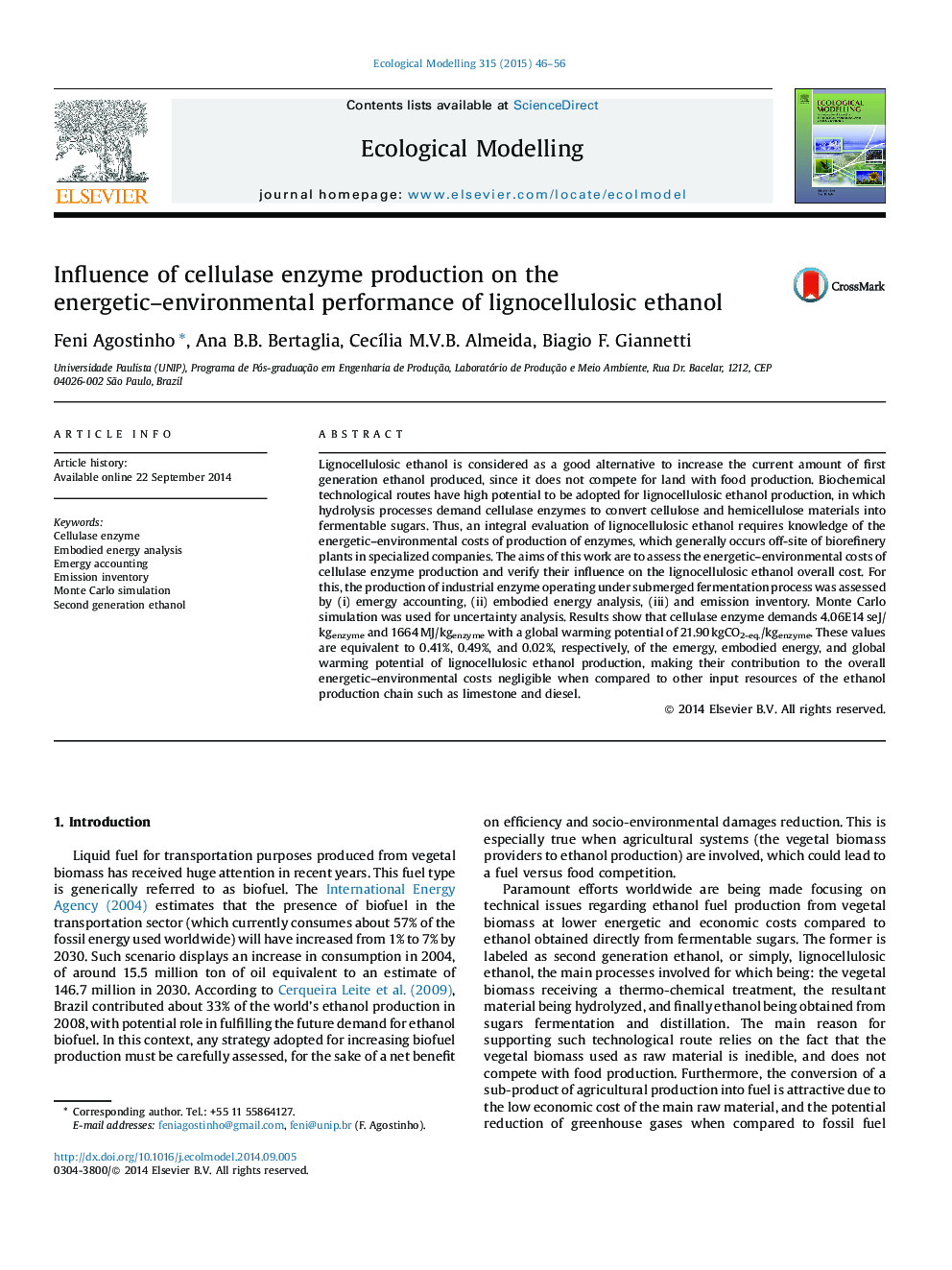| کد مقاله | کد نشریه | سال انتشار | مقاله انگلیسی | نسخه تمام متن |
|---|---|---|---|---|
| 4375646 | 1617432 | 2015 | 11 صفحه PDF | دانلود رایگان |
• Cellulase enzyme production under submerged fermentation process is evaluated.
• Emergy, embodied energy, and emission inventory are considered in the evaluation.
• Intensity factors are calculated for 1 kg of cellulase enzyme produced.
• Cellulase enzyme has negligible pressure on the lignocellulosic ethanol production.
Lignocellulosic ethanol is considered as a good alternative to increase the current amount of first generation ethanol produced, since it does not compete for land with food production. Biochemical technological routes have high potential to be adopted for lignocellulosic ethanol production, in which hydrolysis processes demand cellulase enzymes to convert cellulose and hemicellulose materials into fermentable sugars. Thus, an integral evaluation of lignocellulosic ethanol requires knowledge of the energetic–environmental costs of production of enzymes, which generally occurs off-site of biorefinery plants in specialized companies. The aims of this work are to assess the energetic–environmental costs of cellulase enzyme production and verify their influence on the lignocellulosic ethanol overall cost. For this, the production of industrial enzyme operating under submerged fermentation process was assessed by (i) emergy accounting, (ii) embodied energy analysis, (iii) and emission inventory. Monte Carlo simulation was used for uncertainty analysis. Results show that cellulase enzyme demands 4.06E14 seJ/kgenzyme and 1664 MJ/kgenzyme with a global warming potential of 21.90 kgCO2-eq./kgenzyme. These values are equivalent to 0.41%, 0.49%, and 0.02%, respectively, of the emergy, embodied energy, and global warming potential of lignocellulosic ethanol production, making their contribution to the overall energetic–environmental costs negligible when compared to other input resources of the ethanol production chain such as limestone and diesel.
Journal: Ecological Modelling - Volume 315, 10 November 2015, Pages 46–56
